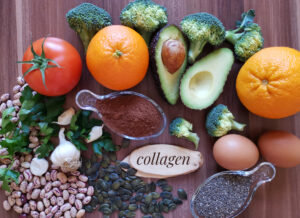The Ultimate Guide to Joint Health: Tips for Mobility, Flexibility, and Pain-free Living

As we age, maintaining joint health becomes more than just a fitness goal; it’s essential for enjoying life to the fullest-keeping up with the grandkids, hiking that mountain trail, or simply getting out of bed without feeling stiff. Joints are the body’s natural hinges, supporting movement and allowing us to go about daily tasks comfortably. But as the years go by, these hinges need a bit of extra care. Thankfully, with a few proactive habits, anyone can help keep their joints healthy, mobile, and pain-free well into later years.
In this guide, we’ll explore simple but effective ways to care for joints, including how collagen can support joint health, mobility exercises, and natural ways to maintain flexibility and reduce stiffness.
Why joint health is key to long-term mobility and quality of life
Our joints are designed to handle a lifetime of movement, but as they go through wear and tear, they can become prone to stiffness and discomfort. Joint health impacts everything from standing up easily to preventing injuries from sudden movement. When joints lose mobility, even simple activities like climbing stairs, gardening, or picking up objects become more difficult and uncomfortable. Neglecting joint health can lead to a vicious cycle of reduced activity, which often results in even more joint pain and stiffness. And for many, long-term reliance on pain medications becomes problematic due to their potential impact on gut health.
But here’s the good news: taking care of your joints doesn’t require hours at the gym or drastic lifestyle changes. Small, consistent actions can make a big difference, like adding collagen for joint support or incorporating a few daily mobility exercises to keep your joints working smoothly and comfortably.

Understanding collagen and its role in joint health
Think of collagen as the body’s built-in glue. It’s a protein that makes up much of our skin, cartilage, tendons, and ligaments, helping to keep joints resilient and cushioned. Collagen acts like padding in our joints, preventing bones from rubbing against each other and allowing smooth movement.
But here’s the catch-collagen production naturally decreases as we age. By our 40s, and especially post-menopause for women, the body produces less collagen, often leading to more joint stiffness, aches, and reduced flexibility. For this reason, focusing on collagen-rich foods and supplements can provide essential support for joint health.
Top nutrients and dietary sources to support collagen production
While collagen supplements can help fill the gap, it’s also beneficial to support collagen production naturally with key nutrients. Here are a few essentials to consider:
- Vitamin C: Necessary for collagen synthesis, vitamin C is found in fruits and veggies like oranges, berries, bell peppers, and broccoli. Try adding a mix of these foods daily to help keep collagen levels up.
- Copper: Found in foods like nuts, seeds, shellfish, and even chocolate, copper plays a role in activating enzymes essential for collagen production.
- Amino acids (glycine and proline): These building blocks of collagen are found in protein-rich foods like chicken, fish, eggs, and legumes. Bone broth, in particular, is a powerhouse for collagen-supporting amino acids and is easy to incorporate into soups or stews.
Collagen-rich foods
For those who prefer natural food sources, bone broth is an excellent option, rich in glycine, proline, and other amino acids vital for collagen production. Other collagen-boosting foods include the skin of chicken and fish. Including these foods in your diet a few times a week can give the body the raw materials it needs to keep collagen levels up.

Benefits of collagen supplements for joint health
Adding collagen supplements to your routine can go a long way toward reducing joint pain, improving flexibility, and supporting cartilage repair. Specific collagen types, like Fortigel and Fortibone, have been studied for their targeted benefits on joints, tendons, and ligaments.
- Fortigel: Known for its ability to support joint cartilage, Fortigel collagen can be helpful for reducing joint pain and improving mobility. Research shows it’s beneficial for people with joint discomfort or stiffness, as it helps regenerate the cartilage that cushions joints.
- Fortibone: Fortibone collagen specifically targets bone health, making it a great option for those looking to support both bones and joints as they age.
Collagen supplements are available in powder or capsule form, and they’re easy to add to a morning coffee or smoothie. Many people notice benefits like reduced discomfort and greater flexibility within a few months of consistent use.

Essential mobility exercises to keep joints flexible and pain-free
Regular movement is crucial for keeping joints in good shape. When we move, we increase blood flow to the cartilage and muscles surrounding the joints, which helps to nourish and support joint health. Here are a few exercises for joint flexibility that are gentle yet effective:
Stretching
Gentle stretching is one of the simplest ways to keep joints flexible. Focusing on areas like the hips, shoulders, and hamstrings helps prevent tightness, which can limit mobility and cause discomfort. Try these stretches:
- Hip flexor stretch: Kneeling on one knee with the other foot in front, lean slightly forward to stretch the hip flexors. Hold for 20–30 seconds on each side. This is especially helpful for those who sit a lot during the day.
- Hamstring stretch: Bend forward at the waist, keeping legs straight, and reach toward the toes. This stretch reduces tension in the back and legs, helping to ease stiffness.
Yoga
Yoga offers a gentle approach to flexibility, focusing on slow, deliberate movements that support joint health. Poses like downward dog, child’s pose, and cat-cow are great for maintaining flexibility in the shoulders, spine, and hips. These beginner-friendly poses also improve balance and help release tension, supporting overall joint comfort.
Active stretching
Active stretching involves moving the joints through a full range of motion, which helps with flexibility and reduces stiffness. These exercises can also serve as a gentle warm-up before exercise.
- Leg swings: Stand on one leg and swing the other leg forward and backward in a controlled motion. This move supports hip flexibility and warms up the joints.
- Arm circles: Stand with arms extended to the sides and make small circles, gradually increasing the circle size. This exercise is great for shoulder mobility.
Balance training
Good balance can help stabilise joints and reduce the risk of injuries. Practicing balance exercises, like standing on one foot or using a balance board, helps strengthen the muscles around the joints and improves stability, particularly in the ankles and knees.

Joint health and mobility tips for every age
The best time to start caring for your joints is now, no matter your age. Here’s some age-specific advice to support joint health and flexibility:
- In your 40s: Start incorporating gentle mobility exercises and consider collagen supplements for joint support to help counteract the natural dip in collagen production.
- In your 50s: Focus on low-impact exercises like swimming, cycling, and yoga, which are easy on the joints while improving flexibility and strength.
- 60 and beyond: Stay active with stretching, balance exercises, and practices like Tai Chi, which support joint mobility without straining them. Consistency in these practices helps keep joints mobile and reduces stiffness.
Setting small goals, like a 10-minute daily stretch or adding collagen to a morning routine, can make it easier to maintain healthy habits without feeling overwhelmed.
How to incorporate collagen and mobility exercises into your routine
Building a joint-friendly routine doesn’t need to be complicated. Here are some practical tips to make collagen and mobility exercises a natural part of your day:
- Add collagen to your morning drink: Many collagen powders dissolve easily in coffee, tea, or smoothies, making them a convenient addition to breakfast.
- Dedicate 10 minutes each day to mobility: Even a short stretch session can make a big difference. Choose a few favourite stretches or poses and gradually make this a daily habit.
- Incorporate balance work into daily activities: For instance, practice standing on one leg while brushing your teeth or waiting for the kettle to boil. These small movements help stabilise joints and strengthen supporting muscles.
For those who prefer a bit of guidance, there are many online videos offering short mobility routines that can fit into any schedule. A quick 15-minute mobility video can be a great way to start the day or unwind in the evening.
The bottom line
Joint health plays a huge role in maintaining an active, fulfilling lifestyle, especially as we age. By focusing on simple, consistent habits-like incorporating collagen supplements, gentle stretches, and balance exercises-it’s possible to keep joints healthy, mobile, and pain-free.
From the benefits of specific collagen types like Fortigel and Fortibone to the impact of flexibility exercises, each step adds up to support overall joint comfort and function. Making small, manageable adjustments now can help ensure that joint health remains strong for years to come.
If you’re ready to take action, start by adding a collagen boost to your routine or explore a few mobility exercises to keep your joints happy and flexible. Small changes today can make a world of difference tomorrow.






